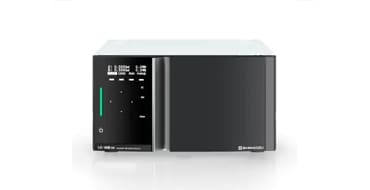Boost your separation with Shimadzu's most powerful UHPLC pump. Our goal is to ensure low pulsation, gradient formation accuracy, and retention time reproducibility with our parallel dual plunger design. One LC-40BX3 can deliver two solvents for reliable high-pressure gradient separation. Its new design has no flow channel meeting point inside the pump, making it a true binary pump in a compact housing. The ultra-high pressure tolerance (up to 130 MPa/1300 bar) allows for the use of sub-2μm particle columns.
HPLC Pump - LC-40D - Options
Pump - LC-40D
Related information
-
-
Discover faster analysis, better resolution, and more reproducible chromatography with our new flagship UHPLC pump. Our industry leading LC-40D X3 pump ensures precision and accuracy at all flow rates. The ultra-high pressure capacity (up to 130 MPa/1300 bar) allows the of sub-2μm particle columns for high efficiency chromatography, especially for LC-MS/MS applications. An internal valve is available for solvent selection, low pressure gradient (LPGE) formation, and blending functions.
-
Experience ultimate confidence with your resolution, sensitivity and separation with the innovative LC-40DXS UHPLC pump. The parallel dual plunger design provides the utmost in gradient accuracy and repeatability for UHPLC separations up to 105 MPa (1050 bar.) An internal LPGE unit can be added to enable low-pressure gradient formation and blending of mobile phases.
-
Experience our LC-40B XR pump, a binary, high-pressure gradient solvent delivery unit that incorporates two pumps into one compact unit, with no compromises in gradient accuracy or retention time reproducibility. The space-saving design is an ideal choice for binary gradient separations up to 70 MPa (700 bar.)
-
Discover the next generation of UHPLC pumps with extremely reliable and robust performance over an extended pressure tolerance (compared to traditional HPLC systems). The parallel dual plunger type design offers stable solvent delivery for a wide analytical flow rate range. Solvent selection, low pressure gradient (LPGE,) and blending functions can be used.







